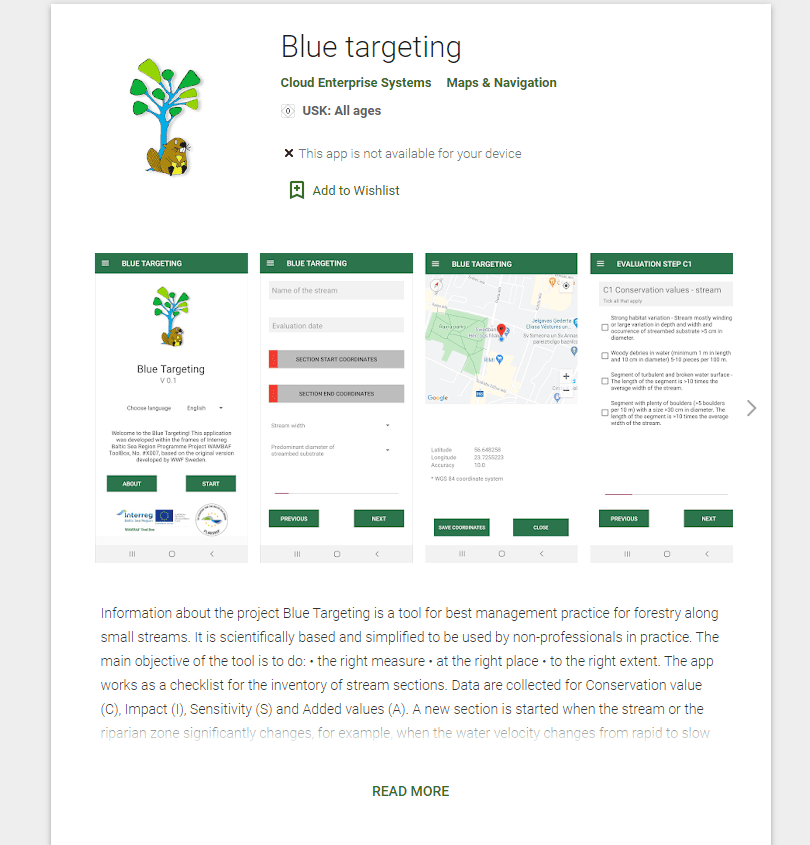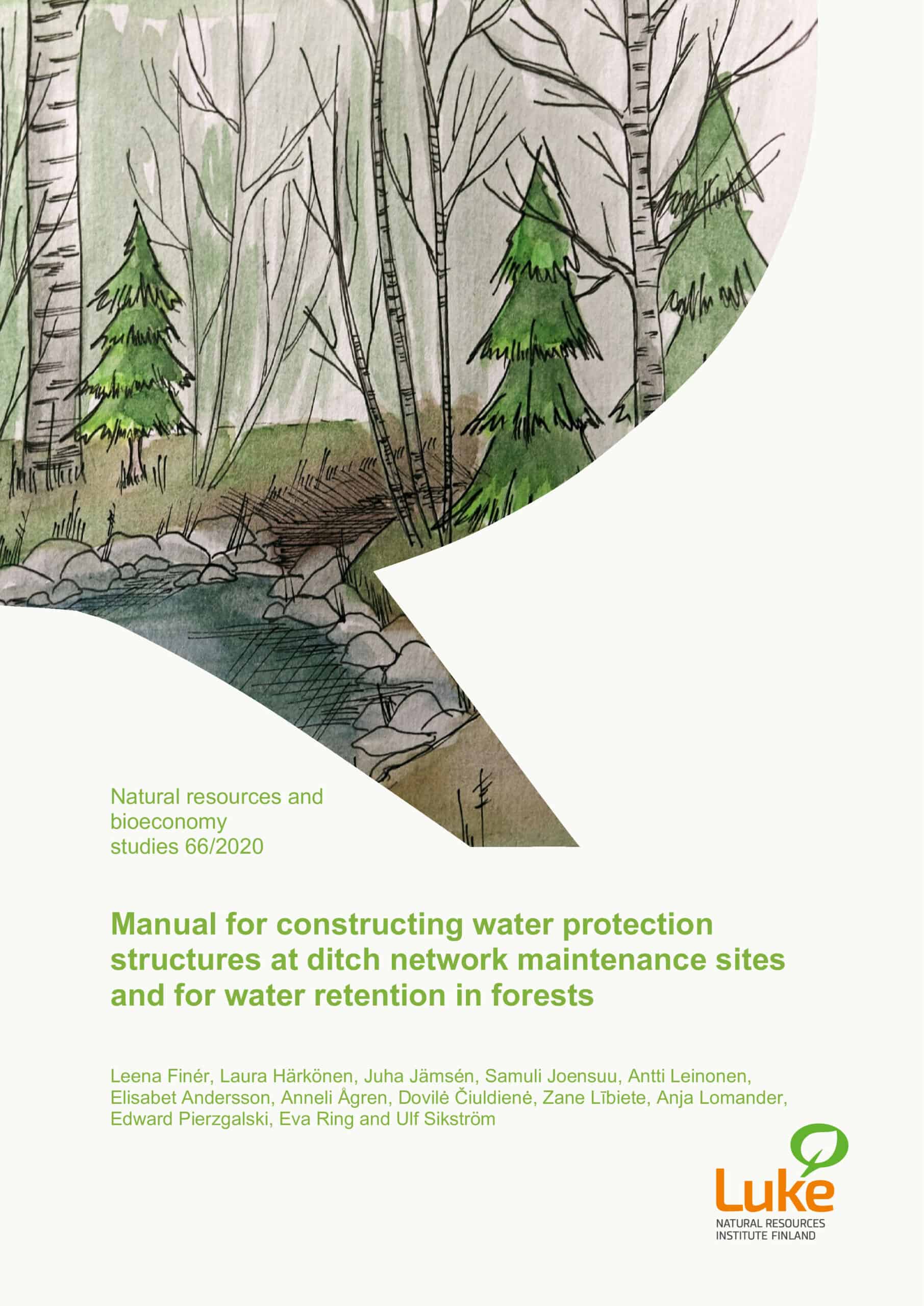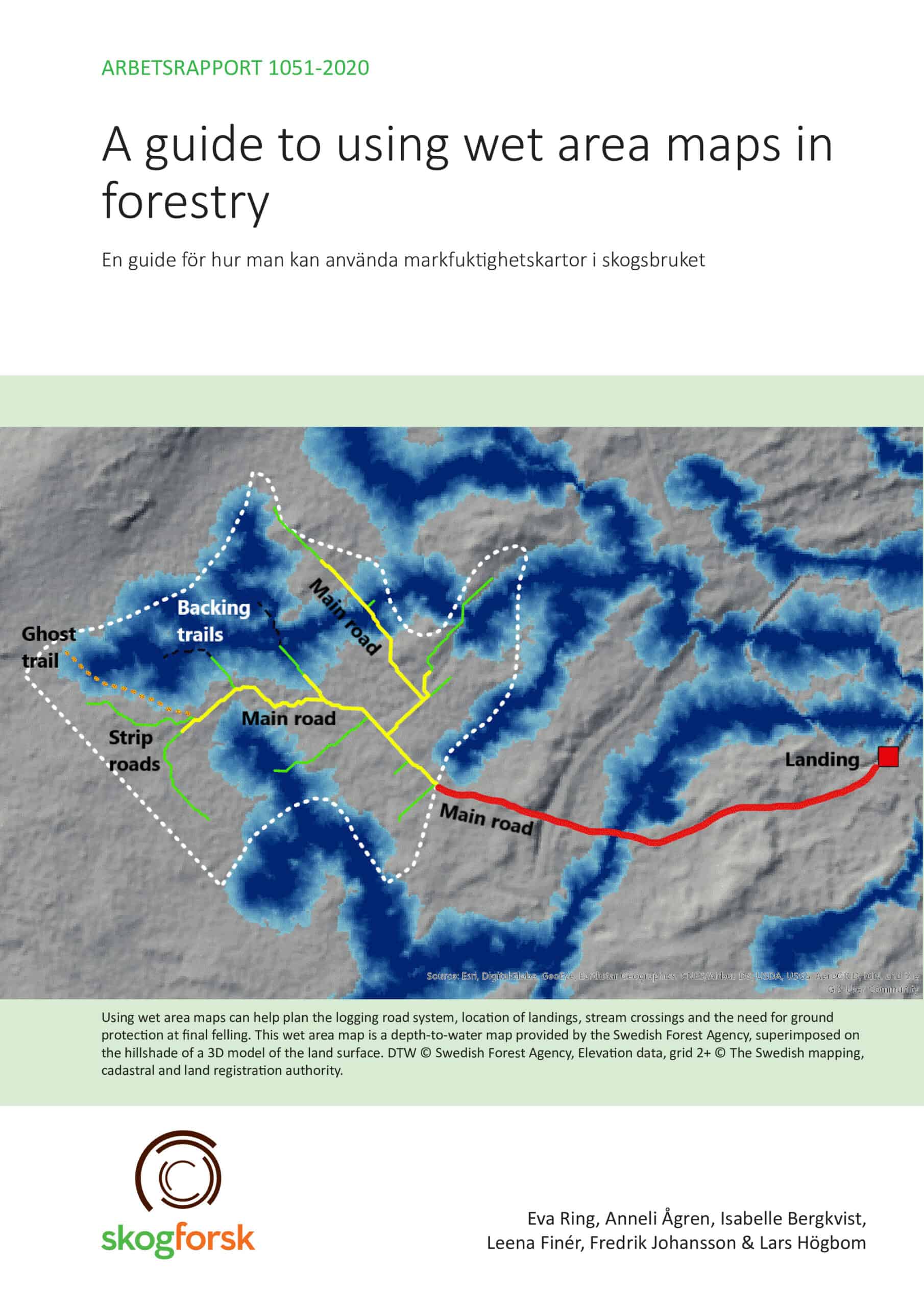WAMBAF Tool Box
Harmful discharge from forests
Forests cover 48% of the Baltic Sea catchment and are accountable for about 19% of the total nitrogen and 16% of the phosphorus load to the sea, according to Baltic Marine Environment Protection Commission (HELCOM). Forest streams and rivers take nutrients and hazardous substances, such as methyl mercury, directly to the regional and coastal waters. In this way, they add to the eutrophication and pollution of the Baltic Sea water and decrease of biodiversity.
Missing coordination across the region
The main drivers of change in the inflow of nutrients and hazardous substances is better maintenance of forest drainage systems, management of riparian forests, and distribution of beaver dams. To date, however, authorities responsible for the forestry in the countries around the Baltic Sea have applied various, often barely cost-effective water protection practices without coordinating the efforts with the neighbouring countries. With better knowledge and efficient tools in place, the authorities, as well as forest enterprises, forest owners and hunters could more effectively plan operations in riparian forests, decide which drainage systems to keep and assess which beaver dams have the best capacity to decrease the amounts of nutrients and hazardous substances in waters.
WAMBAF partnership put the development of the toolbox into the spotlight
Good practices and tools for forestry to improve water quality were developed in the WAMBAF project. The WAMBAF Tool Box adapts the tools to ensure they are better used among wider groups of forest enterprises, managers, planners, hunters, landowners and authorities.
Budgets
in numbers
-
1.06MillionTotal
-
0.72MillionErdf
-
0.11MillionEni + Russia
-
0.00MillionNorway
Achievements
The project WAMBAF Tool Box brought together public authorities, non-governmental organisations, forest enterprises and research institutions to continue implementing solutions to reduce the release of nutrients and highly toxic methylmercury concentrations to the Baltic Sea. The partner organisations from Sweden, Finland, Latvia, Lithuania, Russia and Poland created a toolkit that covers maps, guidelines, manuals, planning tools and educational films.
Comprehensive toolbox released
The partners developed wet area maps for four countries that help to improve water quality by ensuring better land-use management. For Sweden, the partners published a machine-learned wet area map, combining the information of many maps into one. While for Finland, Latvia and Poland, depth-to-water maps were produced. For good use of wet area maps for practical forestry and for improved environmental planning, the project also provided a guide. The material is mainly for forestry enterprises and agencies who need support while planning their forest harvest operations. The maps can be found here.
In addition, the previously developed planning tool for best management practice for forestry along small streams, so-called “Blue targeting”, has been digitalised. The blue targeting tool is a checklist that can be filled in while walking alongside a stream in the forest. It provides an assessment of how wide the riparian buffer zone must be in order to ensure ecosystem services. It is adapted to natural given circumstances in Finland, Poland and the Baltic countries. It is now available in a more practical format as an app on Google play, in 7 languages.
Enhanced skills through training
The participating organisations and external partners set up training courses that reached about 500 participants. The training targeted forestry professionals (e.g., forest machine operators, forest managers, forest planners and contractors) landowners, authorities, hunters and non-governmental organisations and was organised in Finland, Latvia, Lithuania, Poland, Sweden and Russia. The purpose of the training was to present, test and get feedback on the sustainable forest management tools developed during the WAMBAF project. The courses mostly took the form of webinars but site visits and face-to-face training were introduced. Some of the latter took place in a new demonstration area selected by the project and suitable for showcasing sustainable forest management (i.e., the demo site Kupittaansuo which is a part of state-owned forests in southern Finland).
Outputs
Blue targeting application

Manual for forest drainage

Wet area maps in forestry and a guide to using the maps

Project Stories
Partners
Swedish Forest Agency
- TownBorås
- RegionVästra Götalands län
- CountrySweden
- RepresentativeDaniel Thorell
- Phone
- E-Mail
- Web
Natural Resources Institute Finland (Luke)
- TownHelsinki
- RegionHelsinki-Uusimaa
- CountryFinland
- RepresentativeLeena Finér
- Phone
- E-Mail
- Web
Metsähallitus, Forestry Ltd
- TownVantaa
- RegionPäijät-Häme
- CountryFinland
- RepresentativeEeva-Liisa Jorri
- Phone
- E-Mail
- Web
Latvian State Forest Research Institute Silava
- TownSalaspils
- RegionPierīga
- CountryLatvia
- RepresentativeZane Libiete
- Phone
- E-Mail
- Web
Lithuanian Research Centre for Agriculture and Forestry LAMMC
- TownKėdainiai dirstrict
- RegionKauno apskritis
- CountryLithuania
- RepresentativeMarius Aleinikovas
- Phone
- E-Mail
- Web
World Wildlife Fund (WWF Russia)
- TownArkhangelsk
- RegionArkhangelsk Oblast
- Country
- RepresentativeNikolay Larionov
- Phone
- E-Mail
- Web
Forest Research Institute (IBL)
- TownSękocin
- RegionWarszawski zachodni
- CountryPoland
- RepresentativeRadomir Bałazy
- Phone
- E-Mail
- Web
Skogforsk (The Forestry Research Institute of Sweden)
- TownUppsala
- RegionUppsala län
- CountrySweden
- RepresentativeLars Högbom
- Phone
- E-Mail
- Web
Swedish University of Agricultural Sciences
- TownUppsala
- RegionUppsala län
- CountrySweden
- RepresentativeFrauke Ecke
- Phone
- E-Mail
- Web
Karelian Research Centre of the Russian Academy of Sciences (KarRC RAS)
- TownPetrozavodsk
- RegionRepublic of Karelia
- Country
- RepresentativeNadezhda Mikhailova
- Phone
- E-Mail
- Web
-
Project managerDaniel ThorellSwedish Forest Agency
-
Legal representativeJohanna FromSwedish Forest Agency
-
Financial managerElenor QvarnströmSwedish Forest Agency
-
Communication managerEllen GräntzSwedish Forest Agency



